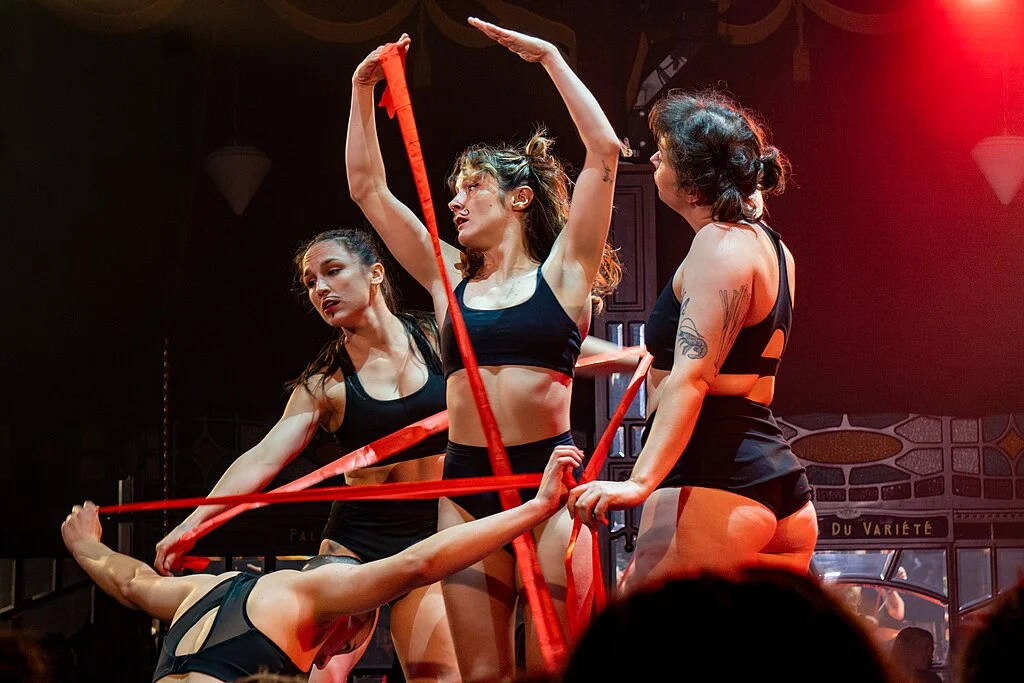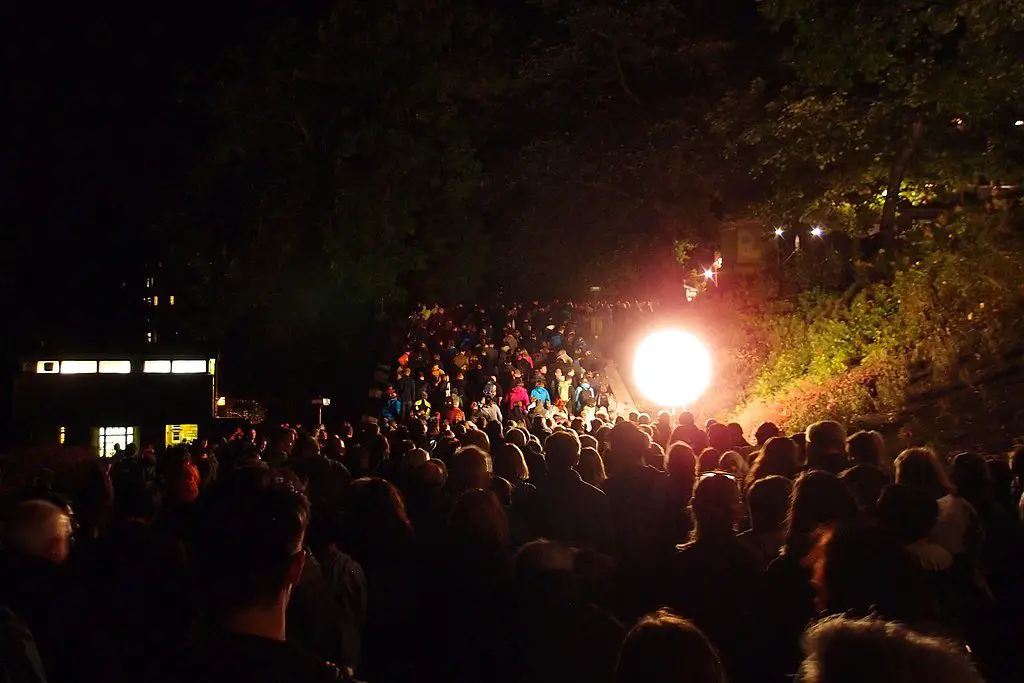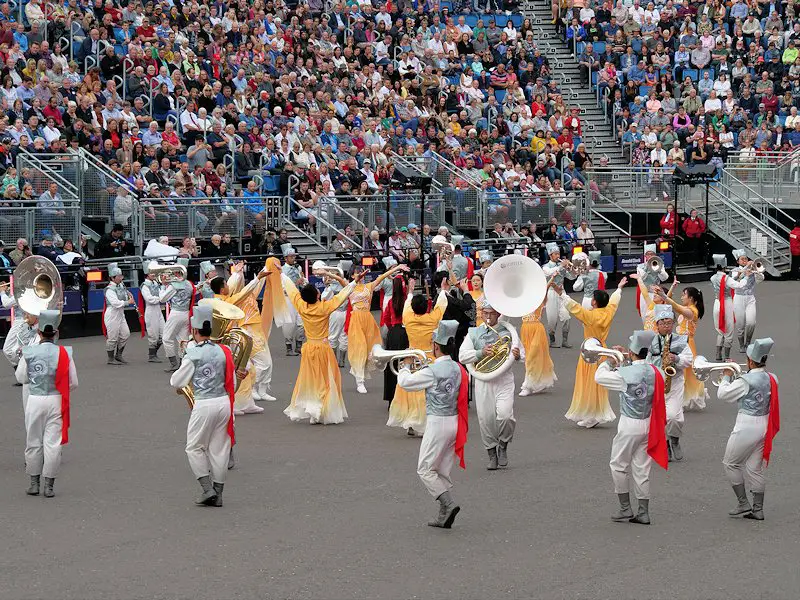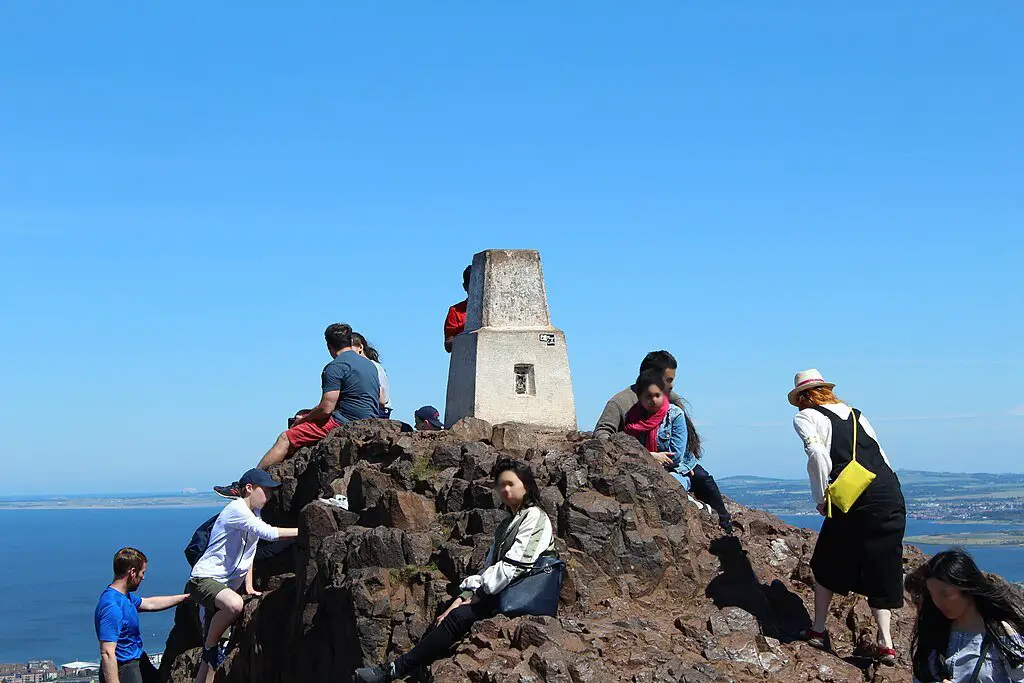Introduction to Edinburgh’s Festival Culture
Edinburgh, the capital of Scotland, is renowned for its vibrant festival culture, which plays a crucial role in shaping the city’s identity. Each year, an array of festivals transform the city into a lively hub of activity, attracting both locals and international visitors. This artistic and cultural vitality not only enriches the community but also reinforces Edinburgh’s reputation as a UNESCO City of Literature and a premier destination for the arts.
At the heart of Edinburgh’s festival culture is the famous Edinburgh Festivals, which comprise a diverse collection of events that celebrate everything from theater and music to literature and science. The pinnacle of this festival culture is the Edinburgh Festival Fringe, the world’s largest arts festival, which takes place every August. With thousands of performances spanning various genres and forms, it serves as a platform for both established and emerging artists, showcasing the immense talent within the creative community.
In addition to the Fringe, Edinburgh hosts several other notable festivals throughout the year. The Edinburgh International Festival, established post-World War II, aims to bring together the world’s best performers and artists for a series of exceptional shows. Complementing these are the Edinburgh International Book Festival, dedicated to literature enthusiasts, and the Edinburgh International Science Festival, which engages citizens with scientific discussions and innovations.
These festivals not only highlight the rich cultural tapestry of Edinburgh but also foster a sense of community, drawing together diverse audiences. Each event reflects the city’s heritage and contemporary spirit, creating an atmosphere that is both inclusive and celebratory. As we delve deeper into each festival in the upcoming sections, we will gain a greater appreciation of their significance within Edinburgh’s unique cultural landscape.
The Edinburgh Festival Fringe: A Celebration of The Arts
The Edinburgh Festival Fringe, commonly referred to as the Fringe, stands as the world’s largest arts festival, attracting artists and audiences from across the globe. Established in 1947, the festival began as a counter-event to the International Festival of Edinburgh, with eight theatre companies performing without official sanction. Over the years, the Fringe has seen exponential growth, hosting thousands of performances that span a variety of genres including theatre, comedy, dance, music, and spoken word.
What sets the Edinburgh Festival Fringe apart is its open-access policy, meaning any artist can participate, leading to a diverse array of performances. This inclusivity ensures that attendees can explore a rich tapestry of creative expression. From established professionals to emerging talents, performers of all backgrounds are given a platform to showcase their work. Much of the magic of the Fringe lies in its unpredictability; visitors may stumble upon a hidden gem or an innovative piece of art simply by wandering through the bustling streets of Edinburgh.
When planning a visit to the festival, it is essential to consider the logistical aspects of navigating the city. The festival typically runs throughout August, transforming Edinburgh into a vibrant artistic hub. To make the most of your experience, it is advisable to book accommodations well in advance, as hotels and hostels often fill up quickly. Additionally, utilizing local resources such as the Fringe App can help festival-goers stay informed about the performances, allowing them to curate their own itineraries based on individual tastes.
Ultimately, the Edinburgh Festival Fringe offers a unique and exhilarating experience for everyone. With an atmosphere charged with creativity and enthusiasm, it serves as a crucial meeting point for artists and audiences, making it an unmissable event for anyone passionate about the arts.
The Edinburgh International Festival: A Class Above
The Edinburgh International Festival, established in 1947, stands as a distinguished celebration of the arts, showcasing some of the finest performances in the disciplines of theater, opera, and dance. Held annually in August, this prestigious event has become synonymous with high-caliber artistry and cultural significance, attracting both international talent and audiences from around the globe. The festival aims to present the very best performance art, creating a platform where creativity and innovation flourish.
One of the key features of the International Festival is its commitment to presenting only the highest quality performances. Each year, the festival curates an impressive lineup that includes renowned companies and artists, ensuring a diverse range of offerings. This emphasis on excellence has contributed to the festival’s reputation as a premier event in the global arts calendar, setting it apart from other festivals. Audiences can expect to witness not only established works but also groundbreaking new productions that challenge the boundaries of traditional art forms.
The cultural impact of the Edinburgh International Festival cannot be overstated. It fosters a unique environment where different art forms intersect, often leading to collaborative performances that enrich the artistic landscape. Visitors to the festival have the opportunity to engage with a variety of events, including musical recitals, theatrical performances, and contemporary dance showcases. Some must-see highlights often include performances by leading orchestras, opera companies, and acclaimed international dance troupes.
As Edinburgh transforms into a hub of artistic expression each summer, attending the International Festival becomes a cultural pilgrimage for art enthusiasts. Through its dedication to high-quality artistic output, the festival not only entertains but also educates and inspires, making it an essential highlight in the calendar of Edinburgh’s enchanting festivals.
The Royal Edinburgh Military Tattoo: A Spectacle of Heritage
The Royal Edinburgh Military Tattoo is an iconic event that attracts visitors from around the globe to Scotland’s capital each year. This captivating display of military music and dance is set against the stunning backdrop of Edinburgh Castle, creating a unique atmosphere that blends historical heritage and vibrant performances. Established in 1950, the Tattoo has gained recognition as one of the premier events of its kind, showcasing not only the skills of military bands but also traditional Scottish music and dance, offering a glimpse into the rich cultural tapestry of Scotland.
The event features a variety of performances from armed forces and cultural groups from around the world, enhancing its reputation as a global spectacle. The precision of military drill, the stirring sounds of pipe and drum bands, along with the colorful choreography of dancers, makes this a memorable experience for all attendees. The spectacle stands as a tribute to the bravery and tradition of the military, while also celebrating the spirit of unity through music and dance.
For those interested in attending, securing tickets for the Royal Edinburgh Military Tattoo can be a competitive process due to its popularity. It is recommended that potential attendees book their tickets well in advance to avoid disappointment. Tickets are typically available online through the official website, where visitors can choose from a range of seating options. Additionally, for a truly memorable experience, opting for a hospitality package can elevate your visit by offering exclusive seating and catering options.
When it comes to finding the best viewing spots, the esplanade in front of the castle is undoubtedly the prime location. However, there are various vantage points around the city, including Princes Street Gardens, where attendees can enjoy a captivating view of the castle illuminated by stunning lights. Ultimately, the Royal Edinburgh Military Tattoo is a celebration of heritage, artistry, and community, inviting all who attend to immerse themselves in this extraordinary cultural event.
The Edinburgh Science Festival: Science Meets Fun
The Edinburgh Science Festival stands as a vibrant celebration of scientific inquiry, effectively making the subject accessible and entertaining for audiences of all ages. Taking place annually in April, this renowned event weaves together a diverse array of activities, workshops, and talks, providing an engaging platform for individuals to explore the wonders of science. As one of the world’s largest science festivals, it draws participants from near and far, eager to learn and discover.
Throughout the festival, attendees can enjoy hands-on experiments and interactive exhibitions. For families, the festival offers specially designed sessions that encourage younger participants to explore scientific concepts in an entertaining manner. Activities such as coding robots, experimenting with chemistry in a lab, or crafting biological models are commonplace, making science both fun and relevant to daily life. Furthermore, live demonstrations and performances capture the imagination, showcasing how science intersects with art and culture.
Among the many attractions, family-friendly events such as storytelling sessions and science-themed theatrical performances allow children to understand complex concepts through engaging narratives. Additionally, the festival often includes outdoor activities, allowing families to immerse themselves in the beauty of Edinburgh while engaging with science-based pursuits. Educational workshops cover a range of topics, from space exploration to environmental sustainability, ultimately igniting curiosity in the minds of attendees.
Moreover, the Edinburgh Science Festival collaborates with local institutions, including schools and universities, to foster a sense of community involvement. This grassroots participation amplifies its reach, inviting everyone to take part in the excitement of scientific discovery. By merging education with entertainment, the Edinburgh Science Festival is a crucial event on Scotland’s cultural calendar, fostering enthusiasm for science and innovation among all who attend.
Holistic Celebrations: The Beltane Fire Festival and Samhuinn
Scotland boasts a rich tapestry of history and culture, with its ancient festivals serving as a bridge between past traditions and contemporary celebrations. Among the most notable of these are the Beltane Fire Festival and Samhuinn, both of which encapsulate the spirit of community and seasonal change in Edinburgh.
The Beltane Fire Festival, traditionally celebrated on May 1st, marks the beginning of summer. Originating from ancient Celtic practices, the event revolves around the lighting of bonfires, symbolizing the return of warmth and the fertility of the land. Today, the festival showcases a vibrant gathering where participants don elaborate costumes inspired by folklore, engaging in storytelling, music, and dance. The community involvement is evident as thousands flock to Calton Hill to witness the spectacle, reflecting modern interpretations of ancient rituals, while fostering a sense of unity.
Conversely, Samhuinn, celebrated on October 31st, heralds the onset of winter. This festival is steeped in mystique, representing the time when the veil between the living and the spirit world is believed to be thin. Participants typically don costumes representing various supernatural beings, echoing the ancient custom of warding off spirits. Samhuinn, like Beltane, emphasizes community participation; it unites residents and visitors alike in a collective experience filled with theatrical performances, music, and historical reenactments. This event encourages reflective contemplation on the cycles of life and death, mirroring Celtic beliefs about the importance of honoring ancestors.
Both festivals serve not just as vibrant tourism draws, but also as a powerful means of cultural preservation, allowing participants to engage with Scotland’s deep-rooted traditions. Through the Beltane Fire Festival and Samhuinn, visitors and locals are invited to experience the enduring legacy of Celtic customs and the ways in which they continue to enrich modern-day Edinburgh.
Exploring Edinburgh Castle: A Festive Backdrop
Edinburgh Castle stands as a majestic symbol of Scotland’s rich history and is a pivotal element in the city’s vibrant festival culture. Crowning Castle Rock, this iconic fortress not only offers breathtaking views of the city but also serves as an incredible backdrop for various festivals throughout the year. From the Scottish International Festival to the Edinburgh Festival Fringe, the castle’s presence adds a unique historical depth to these celebratory events.
Understanding the historical significance of Edinburgh Castle enhances the festival experience. Established in the 12th century, the castle has witnessed many crucial events in Scottish history, including the crowning of kings and the battles for Scottish independence. When visiting during festival season, it is beneficial to explore the castle’s exhibitions, which detail its storied past and the role it played in shaping the nation. One can experience captivating displays of weaponry, royal regalia, and the Crown Jewels, all while enjoying the festivity atmosphere that engulfs the city.
To make the most of your visit to Edinburgh Castle during festival season, consider planning your trip early. The castle can become busy, particularly during major events. Buying tickets online in advance allows for a smoother experience. Additionally, arriving early in the day provides the opportunity to explore the castle grounds without the crowds. Guided tours can also enrich your visit, offering insights that may not be readily apparent from signage alone.
Finally, timing your visit with specific festivals can elevate your experience even further. Many events, such as the Edinburgh Tattoo, take place right outside the castle walls, creating a stunning combination of history and celebration. Regardless of when you visit, Edinburgh Castle remains an unsurpassed cornerstone of the city’s festive spirit.
Holyrood Palace: Royal Festivities and History
Holyrood Palace stands as a symbol of Scotland’s royal heritage, making it a focal point during various festivals throughout the year. Nestled at the end of the Royal Mile in Edinburgh, this magnificent residence has been the official home of the monarch in Scotland since the 16th century. Its rich history is interwoven with the stories of notable figures, including Mary, Queen of Scots, adding a layer of intrigue to the events hosted here.
During the festival season, Holyrood Palace transforms into a vibrant hub of activity, welcoming thousands of visitors who come to experience its regal charm. Notably, the palace hosts events such as the Queen’s official garden parties and special performances celebrating Scottish culture. These events not only showcase the palace’s stunning architecture and expansive gardens but also offer unique insights into the traditions and customs of the Scottish royal family. It serves as a backdrop for numerous festivities, particularly during the Edinburgh Festival Fringe and the Edinburgh International Festival, where the historical site becomes alive with performances and artistic expression.
For visitors wishing to explore Holyrood Palace, planning ahead is recommended. Tickets are available online and at the gate, with guided tours providing an enriching experience that details the palace’s extensive history and its significance in royal ceremonies. It’s also advisable to check for any special events or exhibitions leading up to a visit, as these can enhance the experience immensely. The lush gardens surrounding the palace offer a serene spot for reflection, allowing guests to immerse themselves in the beauty of the area. In essence, visiting Holyrood Palace during festival season not only allows guests to appreciate its architectural beauty but also to engage with Scotland’s vibrant royal traditions.
Arthur’s Seat: The Scenic View Beyond the Festivals
Arthur’s Seat, a dormant volcano located in Holyrood Park, serves as one of Edinburgh’s most prominent geological features and is a vital part of the city’s landscape. Rising to an elevation of 251 meters, it offers visitors an opportunity to explore the natural beauty and geological heritage of Scotland. The unique formations and craggy terrain provide a striking backdrop to the vibrant festivals that take place throughout the year, creating an enchanting atmosphere that attracts both locals and tourists alike.
Hiking trails around Arthur’s Seat range in difficulty, accommodating both casual walkers and serious hikers. The main path leads to the summit, which is a well-trodden route and suitable for all fitness levels. It typically takes about 30 minutes to reach the top, rewarding hikers with sweeping panoramic views of Edinburgh. From this vantage point, one can appreciate the architectural splendor of the city, including iconic landmarks such as the Edinburgh Castle and the Palace of Holyroodhouse. Such breathtaking views enhance the overall festival experience, presenting visitors with a picturesque respite from the hustle and bustle of festival activities.
The best times to visit Arthur’s Seat during festival months are early mornings or late evenings when the crowds are thinner, allowing for a more peaceful experience. In addition, the sunrise or sunset views from the summit are particularly captivating, providing a perfect prelude or conclusion to a day immersed in the festival atmosphere. Whether attending the Edinburgh Festival Fringe, the International Book Festival, or the various seasonal celebrations, a visit to Arthur’s Seat is an essential component of appreciating the rich cultural tapestry of the city. This iconic landscape complements Edinburgh’s festivals and contributes to its charm and allure.







